Last month the first meeting of Michigan’s Joint Task Force on Jail and Pretrial Incarceration was held, commencing state-wide efforts to better understand who is in the county jails, the average length of time they are there for and what better alternatives there may be. While county-wide jail data is difficult to come by, the Michigan Department of Corrections releases an annual report that details, among other information, the percentage in which felony offenders are sentenced to prison, jail, jail and probation, probation and other (community service, restitution fines and costs) for all offenses, drug offenses and assaultive offenses. This post highlights those breakdowns by county for the year 2017 in the seven county region.
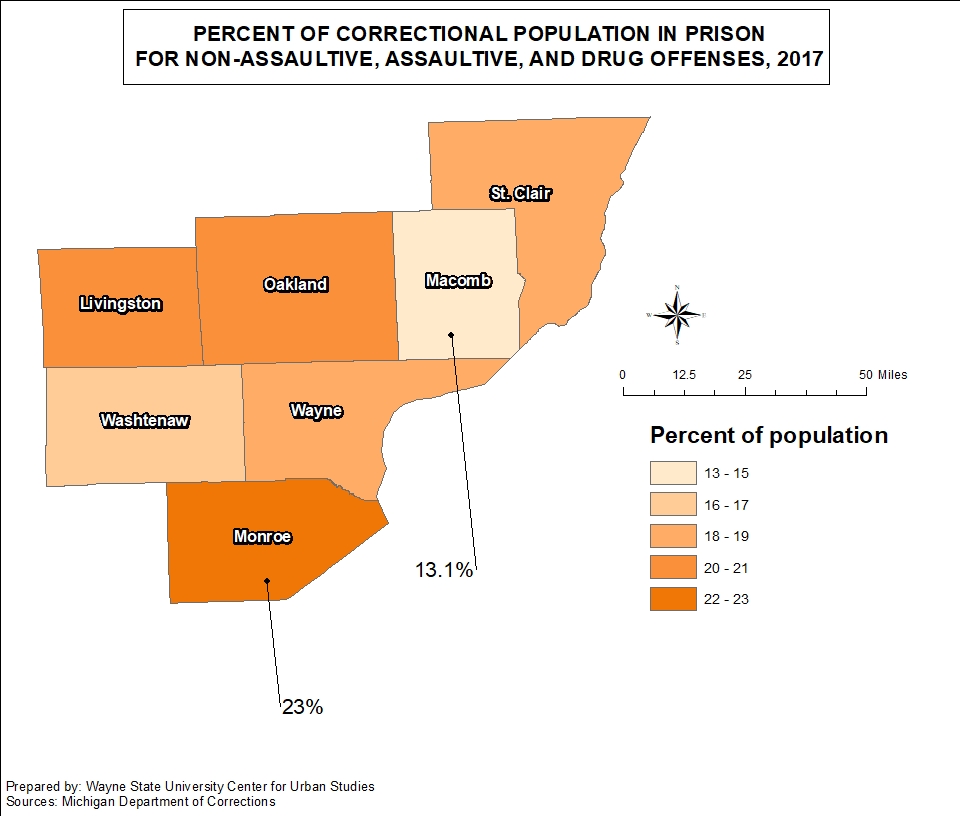
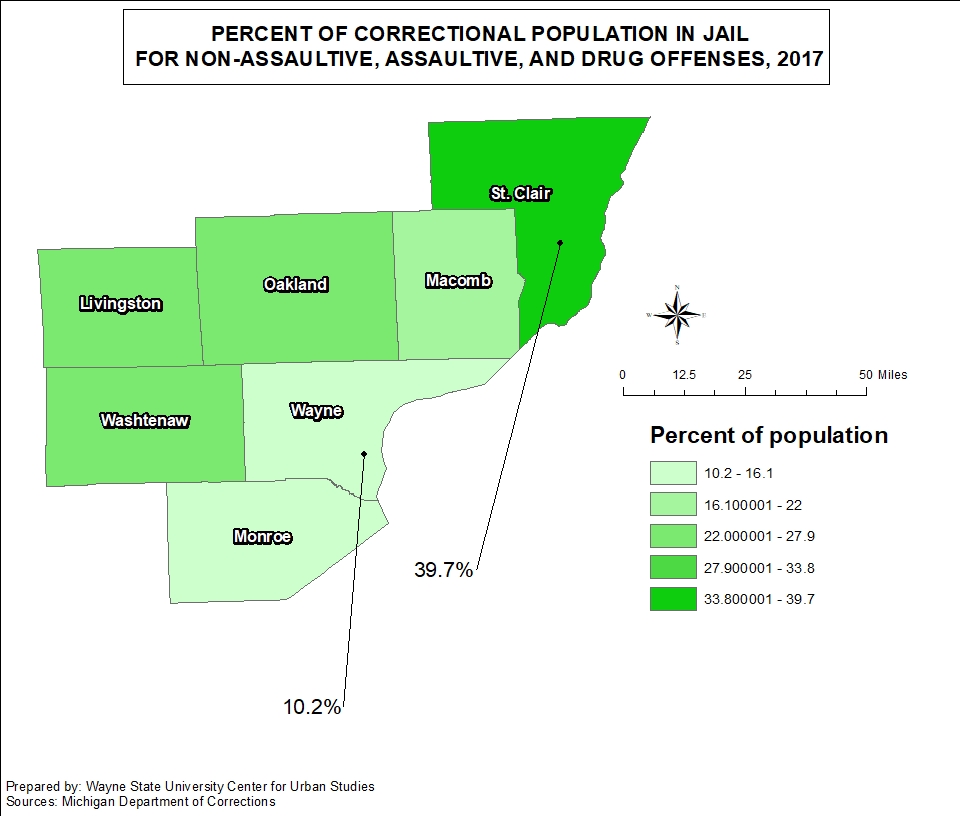
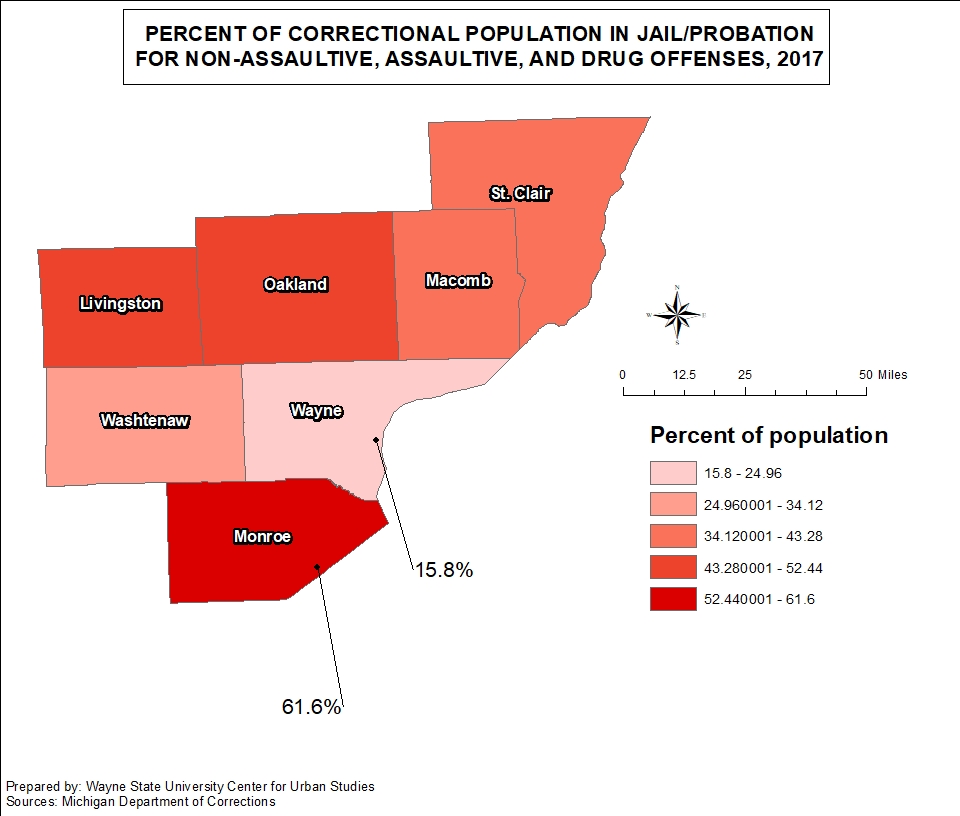
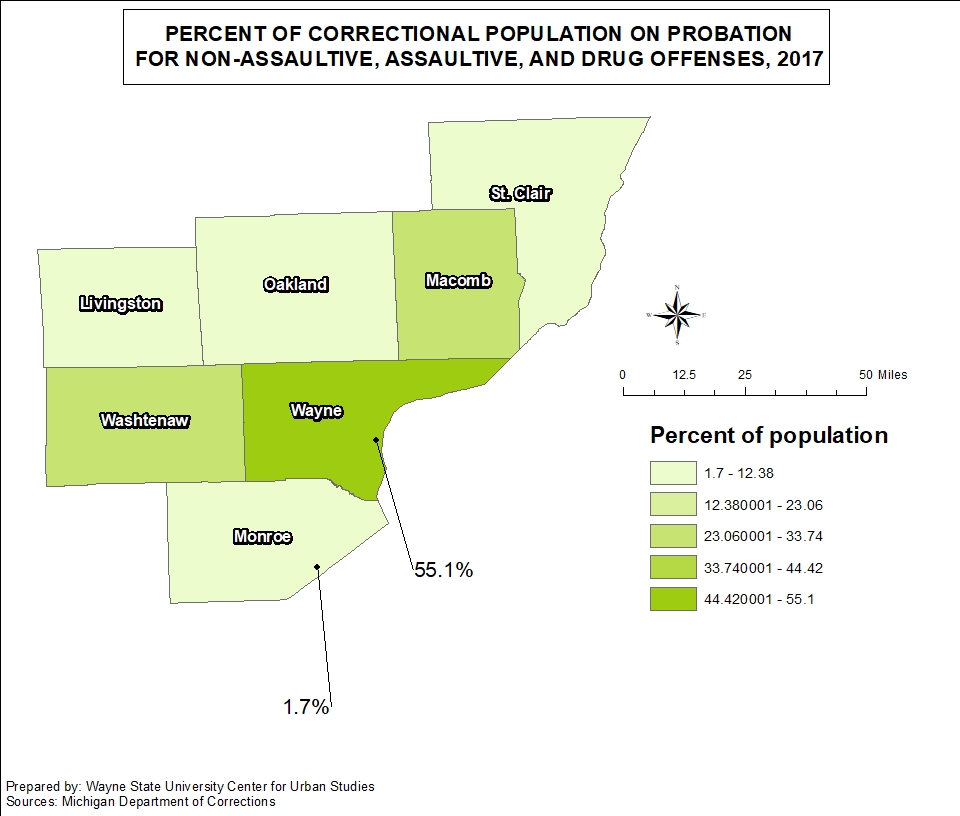
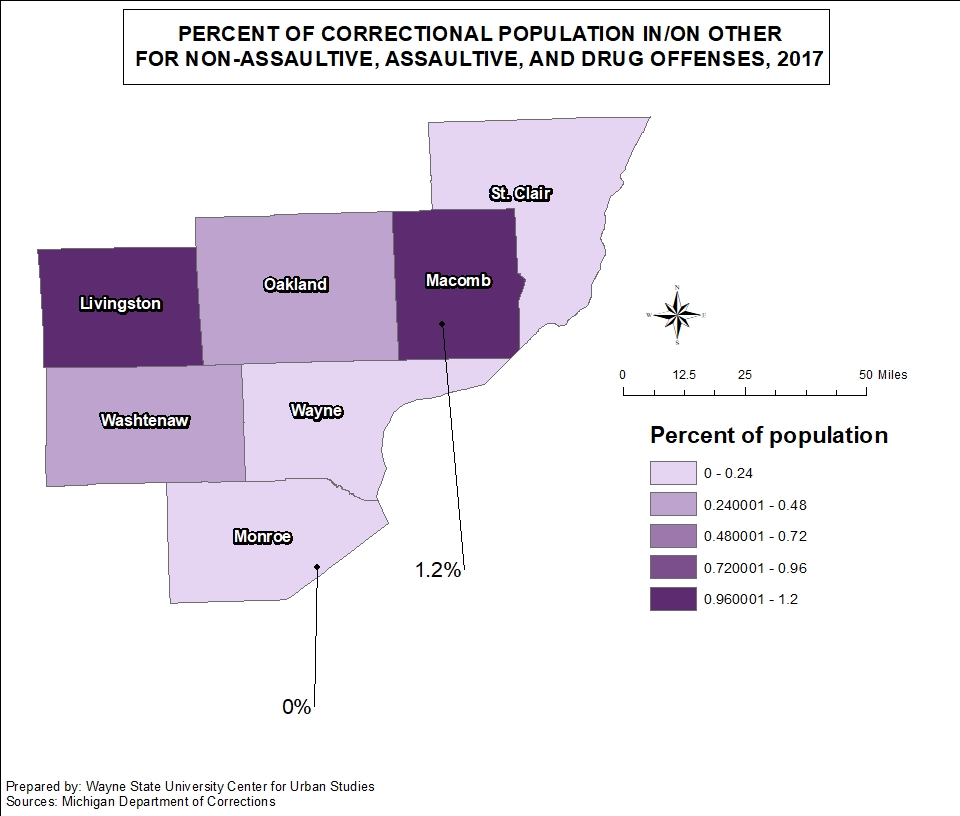
When examining the overall breakdown between the five categories above, Monroe County had highest percentage of felony offenders sentenced to prison over any other sentence type. In 2017, 23 percent of the felony offenders in Monroe County were sentenced to prison. Oakland County was the only other county in the region where more than 20 percent of felony offenders were sentenced to prison; this number was 20.3 percent. Macomb County had the lowest percentage of felony offenders sentenced to prison at about 13.1 percent. The largest difference between prison and jail is the length of stay for an offender; traditionally if an offender is sentenced to serve time for longer than a year they are sentenced to prison.
In the jail category for all criminal felony offenders, St. Clair County had the highest percentage of offenders sentenced to only jail at 39.7 percent. Oakland County had the second highest percentage of felony offenders sentenced to only jail time at about 27.2 percent. Wayne County had the lowest percentage at 10.2 percent. Wayne County also had the lowest percentage of felony offenders sentenced to jail and probation at 15.8 percent. For the jail/probation sentencing category, Monroe County had the highest percentage of felony offenders sentenced to that category at 61.6 percent. Overall, the jail/probation category had the highest percentage of sentencing for all felony criminal offenses in the region, with the exception of Wayne County.
According to the data, in Wayne County in 2017 55.1 percent of criminal felony offenders were sentenced to probation. A recent article by the Detroit News highlights how Wayne County has reduced its incarceration numbers in recent years due to a move to put more offenders on tether monitoring systems, rather than housing them in the jail which costs more per offender per day. The county with the second highest probation sentencing rate was Washtenaw County 27. 1 percent. Monroe County had the lowest probation rate at 1.7 percent.
For the “other” category, which is an individual being sentenced to community service, restitution fines and costs, Macomb County had the highest percentage of offenders sentenced at 1.2 percent. Monroe County had zero percent of offenders sentenced to this option.
A key takeaway is that Wayne County regularly has the highest percentage of offenders sentenced to only probation and the lowest percentage sentenced to any length of a jail stay. As mentioned earlier, the reason for this is likely because probation is traditionally less expensive for a government entity than sentencing someone to jail. It could also be due to the fact that government entities are trying to explore other jail alternatives to reduce the number of offenders entering jails and prisons and to reduce the amount of money it costs a local government entity to house a prisoner.
Next week we will further dig into the felony offender data to see what percentages of offenders with drug, assault and non-assault charges are being sentenced to prison, jail and/or probation.